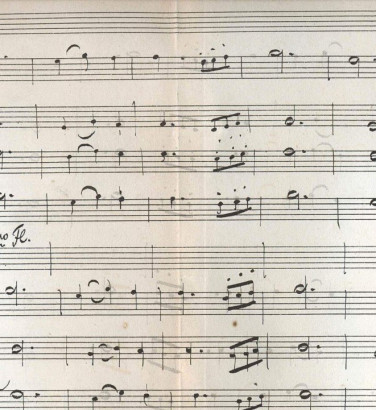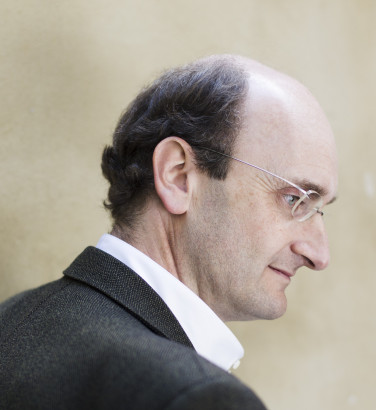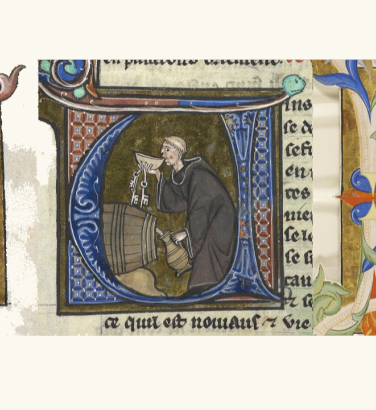
Arrangements, (re)orchestrations and transcriptions: a bluffer's guide
15 Jan 2024
News Story
The final bars of the Hallelujah Chorus (from Handel's Messiah, 1742), showing the orchestral parts only: trumpets, timpani, oboes and strings. In 1789, Mozart would add more woodwind and brass; Eugène Goossens went even further in 1959, with piccolo, contrabassoon, four horns, three trombones, tuba, two harps, triangle, cymbals, bass drum ... and anvil!
Most of the classical music we hear, be it in concert, on the radio or in recordings, is performed using the instruments specified by the composer. When it comes to orchestral music, the numbers may differ – a chamber orchestra such as the SCO will have fewer strings than a symphony or philharmonic orchestra – but by and large, you can be pretty sure the composer’s intentions are being followed.
That said, the SCO is not alone in performing works which have been recalibrated in one way or another. Among the music they have performed in the last year or so, both Montgomery’s Strum and Ngwenyama’s Primal Message exist in a variety of scorings (from chamber ensemble to small orchestra), each casting the music in a slightly different light. Tchaikovsky’s Symphony No 5, scored for an orchestra considerably larger than the SCO, entered the Orchestra’s repertoire towards the end of the 2022/23 Season in an arrangement by George Morton, who reduced the instrumentation to single woodwind instruments, trumpet and trombone, two horns and strings.
In the 2023/24 Season, the Orchestra performed arias from Mozart’s Magic Flute arranged for oboe and orchestra by conductor/oboist François Leleux, recastings of Shostakovich and Beethoven string quartets by Rudolf Barshai and Gustav Mahler respectively, and a new version of Adès’ The Origin of the Harp (originally for 10-piece chamber ensemble) by the composer himself.
There can be all sorts of reasons for adapting an existing work for different forces. The slow movement of Barber’s String Quartet in B minor, Op 11, for instance, has become much better known as his Adagio for Strings, and (to a lesser extent) as an Agnus Dei for unaccompanied choir. Each new iteration of the work has granted it wider exposure, orchestral concerts generally benefitting from larger audiences than chamber music recitals, while performances of choral music stand slightly apart from both. The Adagio for Strings has gained a wider audience still, and a place in popular culture, thanks to its devastating use in Oliver Stone's 1986 film Platoon. It has even found a footing in trance music.
It's all a far cry from the days when composers wrote scaled-down versions of their larger works for performance in domestic circles. This accounts for many pieces rarely performed today, such as the piano concertos Mozart designed with optional wind parts (allowing for them to be played by piano and string quartet) or the existence of Beethoven’s Symphony No 2 and Septet in versions for piano trio. It seems also the most likely explanation for Nicolas Chédeville having reworked Vivaldi’s Four Seasons for the thoroughly unlikely combination of flute (or recorder), violin, hurdy-gurdy and continuo in 1739.
There isn’t much consistency as to which word is preferred to describe these alternative versions. Orchestration seems to be the term of choice for music whose scoring is vastly expanded from the original, whereas transcription tends to imply the opposite: hence Ravel orchestrating Mussorgsky’s Pictures at an Exhibition (originally for solo piano), compared to Liszt transcribing anything from Wagner favourites to Beethoven’s entire symphonic oeuvre for piano.
Beyond this, though personal taste does come into it, arrangement appears to serve as an umbrella term. It allows for more freedom on the part of the arranger, who can rejig the sonorities, harmonies, even the scale of the original, to their heart’s content. The result is an impressively wide spectrum, one which can cross vast stylistic boundaries. Nico Muhly gets across (in his own words) “the effect of one alto holding onto a note too long, a wayward tenor, a day-dreaming treble” in his take on Byrd’s Bow Thine ear, O Lord, Shostakovich has enormous fun with Tea for two (retitled Tahiti Trot) … and The Divine Comedy transforms Noel Coward's I’ve Been to a Marvellous Party into a track worthy of a techno club night.
Related Stories
![]()
Unfinished symphonies
15 December 2025
Your starter for ten: besides Schubert, who has an unfinished symphony to their name?![]()
Andrew Manze: "I've always loved Viennese waltzes and polkas"
1 December 2025
Our Principal Guest Conductor is really looking forward to conducting our Viennese New Year concerts!![]()
The medieval carol
24 November 2025
For this year's Christmas article, we look back at some very early festive carols ...


